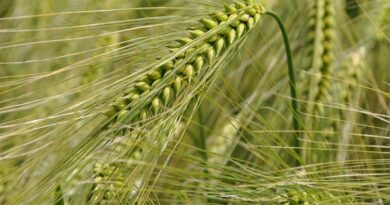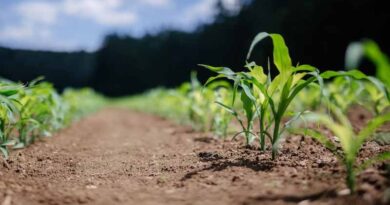Organic and inorganic fertilizers. Do you know the difference?
03 April 2023, Spain: Fertilizers are products whose main function is to provide nutrients to plants, mainly nitrogen, phosphorus, and potassium, but also calcium, magnesium, sulfur, and other micronutrients needed for their development under optimal conditions.
The fertilization treatments used today are relatively recent. They date back to the latter half of the 20th century, but traditional fertilization practices are much older. By now, is there anyone who doesn’t know manure’s fertilizing effect?
But here we are not going to talk about manure, we are going to go a little further because knowing the differences between organic and inorganic fertilizers is fundamental to understanding the correct application of each. The right fertilizer will help prevent nutrient deficiencies, can reduce environmental impact, and save farmers money among its other positive effects.
First of all, let’s look at some definitions.
What is a fertilizer? The definition we found in the Spanish Royal Decree 506/2013, of June 28, on fertilizers states: “It is a product used in agriculture or gardening that, due to its nutrient content, facilitates the growth of plants, increases their yield, and improves the quality of crops or a product that, due to its specific action, modifies, as appropriate, the soil’s fertility or its physical, chemical, or biological characteristics.”
What about inorganic fertilizer? Let’s see, what the same royal decree says: “Fertilizer obtained by extraction or by industrial procedures of a physical or chemical nature, whose declared nutrients are in mineral form”. They are also known as mineral fertilizers or chemical fertilizers.
And lastly, organic fertilizer is a fertilizer “composed of carbonaceous materials of animal or vegetable origin”.
Como veis, en las definiciones se utiliza indistintamente la palabra fertilizante y abono. ¿Son lo mismo? Pues sí, a efectos de la normativa sí.
THE DIFFERENCES BETWEEN INORGANIC AND ORGANIC FERTILIZERS
We will start with the origin of the inputs. Inorganic fertilizers are prepared from rock and minerals and are formed by physical and chemical processes. In the case of organic fertilizers, the origin of the raw materials is vegetable and animal.
Another aspect that differentiates them is that for organic fertilizers to be assimilated by plants they must be transformed in the soil by microorganisms into mineral nutrients, therefore, they also improve soil quality and help prevent soil erosion.
Inorganic fertilizers are more soluble. The advantage of this is that the nutrients are quickly available to plants, but there is also a downside: when there is excess water, some of these nutrients can be wasted as a result of erosion or leaching, and contaminate soil and water at the same time. On the other hand, organic fertilizers are less soluble, so the nutrients are gradually available to the plant, which is also considered an advantage because of their long-lasting effect.
Inorganic fertilizers can generate waste and their excessive use can cause damage to the soil.
In addition, usually organic fertilizers require less energy to produce and may require less economic effort on the part of the farmer.
ORGANIC FERTILIZERS, FERTILIZERS FOR YOUR FUTURE
Many organic fertilizers are made from natural materials found in the soil itself (bacteria, fungi, insects, algae, and other organisms). How exactly do they work?
We are going to tell you about it through two examples: Qlimax and VitaSoil, two of our biofertilizers.
Qlimax is the new soil revitalizer that acts as a prebiotic to multiply the concentration of microbial flora in the soil, stimulate their development, and enhance their beneficial activity in the agronomic management of soil and crops.
Qlimax is the ideal culture medium for the potential establishment, growth, and development of populations of beneficial microorganisms. It stabilizes and develops microbial groups related to plant nutrition and recovery of the soil-plant system, improving soil structure and the nutrient availability for crops. In addition, with enhanced root system development and improved nutrition, crops are more robust and show greater tolerance to stress, resulting in a positive impact on crop yield and quality.
VitaSoil is another Symborg biofertilizer formulated from rhizospheric microorganisms. In addition to helping to unlock nutrients, it fixes nitrogen and solubilizes phosphorus and other nutrients. This results in increased plant yields, and the revitalization of soils and agricultural substrates by increasing rhizospheric microbial populations.
In the current context, in which a new agriculture model is more than necessary, at Symborg, we have opted for organic fertilization because it can be sustainable without sacrificing crop profitability. And you, are you joining the change?
Also Read: G20 India: 2nd ADM of the Agriculture Working Group held in Chandigarh
(For Latest Agriculture News & Updates, follow Krishak Jagat on Google News)















